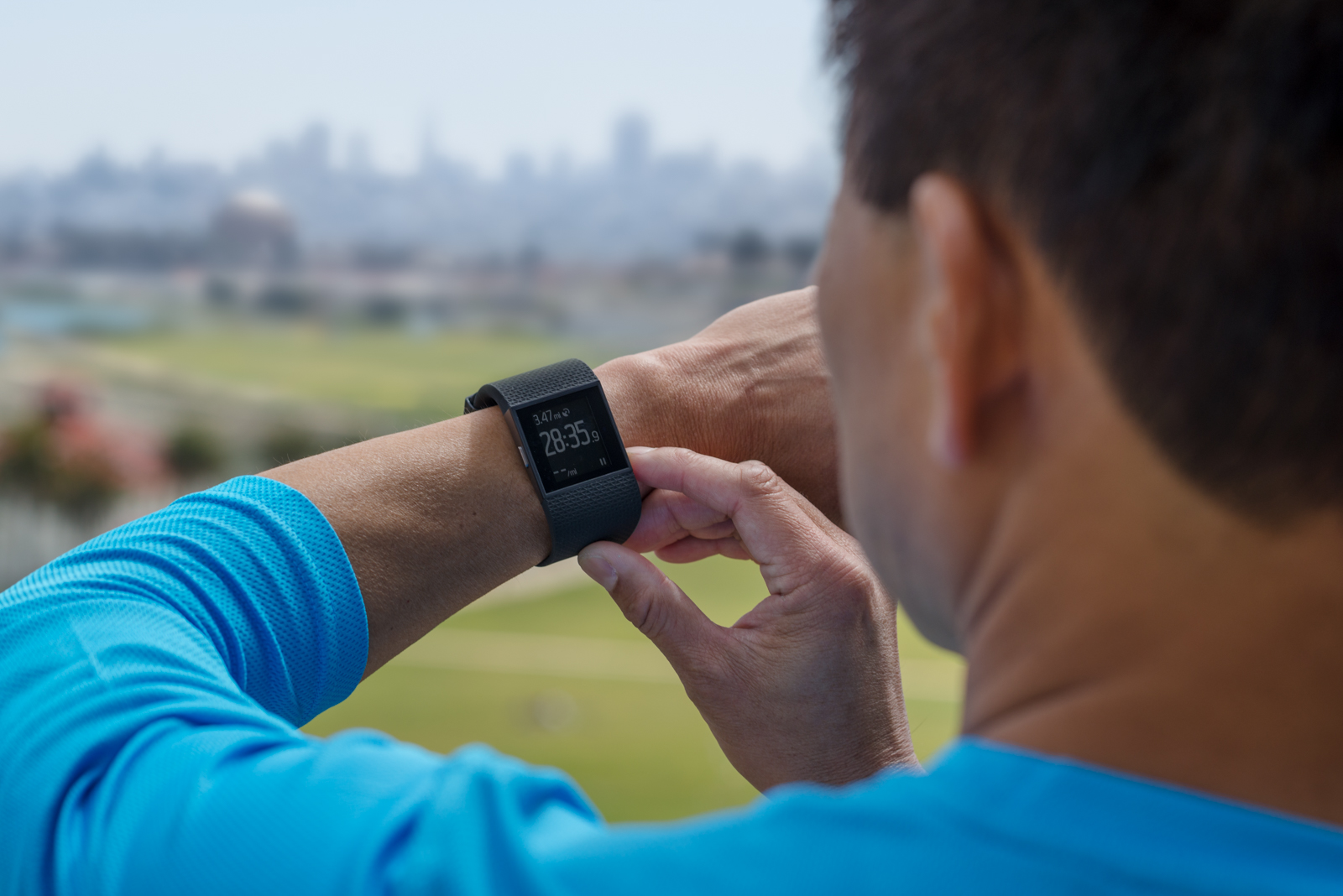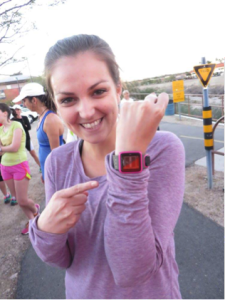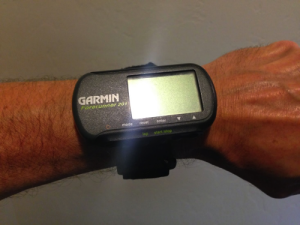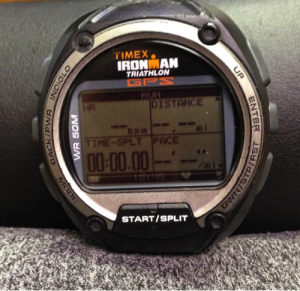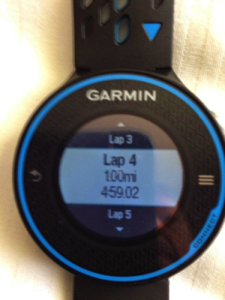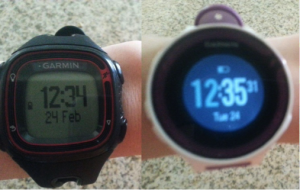GPS Watches: My How Far We’ve Come
If you aren’t already running with a GPS device, chances are that if you look around at your next race or group run, most runners will be wearing a GPS watch or carrying a GPS-enabled smart phone. Today, GPS technology is rapidly improving and there are a number of watches, wearable devices and smartphone apps, which empower you with real-time data about your running—but, it’s worth noting that this technology has come a long way over the last decade. It wasn’t long ago that the accuracy and accessibility of GPS data was a far cry from where it is today—and GPS devices available to runners were similarly clunky. Today we get to enjoy feature-rich devices, like the Fitbit Ionic, that integrate a heart rate monitor, GPS activity tracker and more – all while looking good on your wrist.
In fact, it wasn’t so long ago that runners ran without GPS. Although the US began development of the Global Positioning System in the 1970’s, the first running watch with a GPS receiver did not hit the markets until 2003. Prior to then, we used stopwatches to keep time but distances were generally just estimated from a map, or if you were an experienced runner, you might guess at your pace. In 1984, Timex came out with an LCD watch targeting runners, and the Timex Ironman series dominated runners’ wrists for the next couple of decades.
When Garmin released the first few GPS watches, they were bulky and anyone brave enough to wear one received a lot of smirks and oddball comments as fellow runners wondered why someone would use such a funny-looking watch. I used a Garmin 201, which took up much of my forearm and created an odd feeling of weight imbalance on the run:
The Garmin 201 also took about 5 minutes or more to acquire a signal, and the charging system was a bulky cable with an RS-232 connection. But I loved it! Garmin had an optional software system that let you download the run data for analysis. As a bona fide data junkie, this was treasure to me – the ability to examine split details, elevation gains, and distances at such a detailed level was simply fantastic.
Back then the GPS data was far less accurate. The government actually had a program called Selective Availability, which created an intentional error in GPS accuracy, based on the premise that only the military needed precision. This meant that my data often showed oddities, for example I might run a loop with the same start and finish point, yet the data would say I had climbed 300 feet and finished on the next street over! Fortunately, in 2000 the SA system was abolished and our running watches are now much more accurate.
Nevertheless, there is no way to make a GPS 100 percent accurate, and even with modern tools that attempt to correct for things such as ionospheric shifts and receiver quality, our current running watches will never give a perfect data set. The error in GPS readings typically ranges around one to two percent, which means that when your GPS watch reads one mile, you might have actually gone as much as 50 – 100 feet shorter or farther. Although current GPS watches often give distance readings to three decimal places, you should not treat them as perfect to that level of precision. The same applies to elevation. When you run the San Francisco Marathon in July, your GPS will do a fairly good job of showing you how flat the course actually is once you’re done – but it won’t be perfectly accurate.
When you race with your GPS, you will almost always find that your watch shows a different distance than the race’s advertised distance. For example, you might race a 5k, which technically should be about 3.10686 miles, but when you finish your watch displays a different reading. Be careful about claiming “the course was long”, or “the course was short”, based on only your GPS. If the race manager uses their own GPS to measure out the course, you can be certain the distance is off. But if they obtain USATF Course Certification (and the best races always are Certified distances), the measurement process is different. In fact USATF regulations prohibit course certification based on GPS.
My latest GPS watch is a Garmin FR620. t’s far lighter and thinner than my previous watches, and has modern features like a touchscreen, Bluetooth and Wifi connectivity – a super toy for a nerd! But despite the impressive specs, it’s still not perfect.
Sometimes the readings are misleading. The photo below shows a mile split from a track workout in Flagstaff last year, but it does not represent my true mile time – what the watch does not show is that this is a combination of 200 meter speed intervals.
There are other limitations as well, including the occasional failure of signal acquisition. Last year I completed the Boston Marathon only to discover my GPS said I had run only 17 miles – it lost satellite signals partway through the race, and never recovered. And, of course, most runners with GPS have experienced a dead battery more than once—this is especially true with smart phones, which can fairly rapidly lose power when running continuous GPS.
So, they are not perfect, but GPS can be both fun and useful as a training aid. They can encourage you to run farther—I recall that my first GPS caused me to realize that my regular three-mile route was actually only 2.8, so I lengthened it. They can provide a long-term data set to help you understand and objectively observe trends, including mileage as well as pace trends. The software tools available now are extremely powerful. Online logging systems like Garmin Connect, Strava, Training Peaks, etc. allow you to analyze the data in ways that would make a mathematician proud.
There are a few runners out there who will encourage you to “ditch the GPS” and “run naked”, under the theory that the data will spoil your enjoyment of the run. It’s also possible that excessive monitoring of splits during a run can cause you to actually run slower overall times. But, the GPS is here to stay and it is only going to get better. In the near future you’re likely to see smaller and more accurate devices, or even perhaps heads-up displays of your data in your sunglasses. Maybe you’ll be able to accurately monitor teammates’ positions during a race in real time, or have the device alert you when a bathroom or water fountain is coming up. There are plenty of opportunities for technology advancement in GPS. The true joy of running comes from the sport itself, and the GPS data is just an additional way to enjoy this wonderful sport.
Keith Schlottman is a 2015 San Francisco Marathon Ambassador who lives in Tucson, Arizona. He looks forward to testing his GPS accuracy for the 4th time on the SFM course this year. Keith co-leads the Tucson Runners Project, a free running group for runners of all abilities, with his fiancé.


